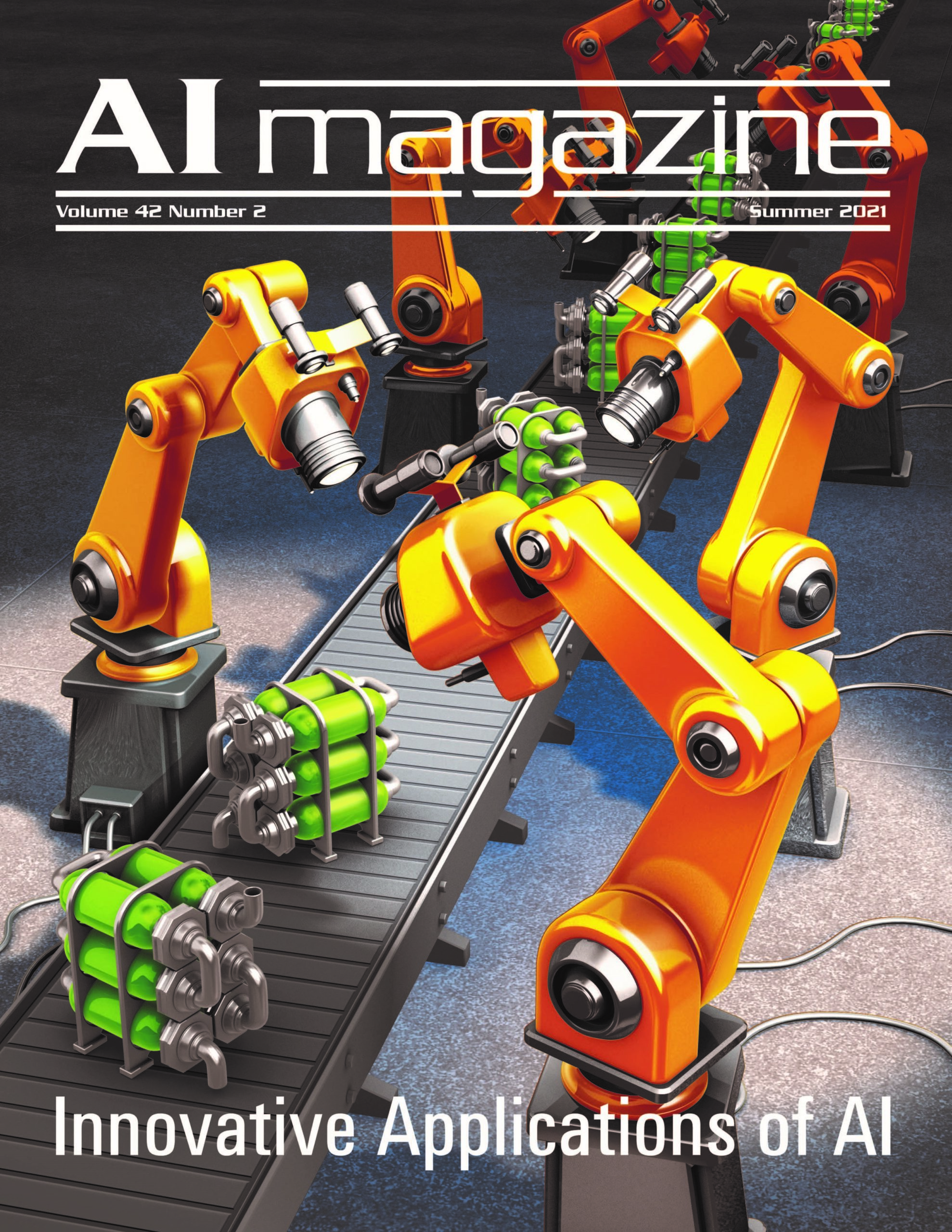Vol 42 No 2: Summer 2020 | Published: 2022-01-11
Editorial Introduction
Ruchir Puri, Neil Yorke-Smith
This special issue presents nine articles that are comprehensive case studies of deployed applications, carefully selected out of the breadth of papers from the 32nd Annual Conference on Innovative Applications of Artificial Intelligence (IAAI-20). IAAI is the premier conference for applied AI research, providing a forum for disseminating work on novel uses of AI technology — ranging from the insightful application of existing techniques to previously unexplored domains through to new or enhanced AI methods that show significant impact for applications considered previously.
Deploying an Artificial Intelligence-Based Defect Finder for Manufacturing Quality Management
Kyoung Jun Lee, Jun Woo Kwon, Soohong Min, Jungho Yoon
This paper describes how the Big Data Research Center of Kyung Hee University and Benple Inc. developed and deployed an artificial intelligence system to automate the quality management process for Frontec, an SME company that manufactures automobile parts. Various constraints, such as response time requirements and the limited computing resources available, needed to be considered in this project. Defect finders using large-scale images are expected to classify weld nuts within 0.2 s with an accuracy rate of over 95%. Our system uses Circular Hough Transform for preprocessing as well as an adjusted VGG (Visual Geometry Group) model. Our convolutional neural network (CNN) system shows an accuracy of over 99% and a response time of about 0.14 s. To embed the CNN model into the factory, we reimplemented the preprocessing modules using LabVIEW and had the classification model server communicate with an existing vision inspector. We share our lessons from this experience by explain-ing the procedure and real-world issues developing and embedding a deep learn-ing framework in an existing manufacturing environment without implementing any hardware changes.
Federated Learning-Powered Visual Object Detection for Safety Monitoring
Yang Liu, Anbu Huang, Yun Luo, He Huang, Youzhi Liu, Yuanyuan Chen, Lican Feng, Tianjian Chen, Han Yu, Qiang Yang
Visual object detection is an important artificial intelligence (AI) technique for safety monitoring applications. Current approaches for building visual object detection models require large and well-labeled dataset stored by a centralized entity. This not only poses privacy concerns under the General Data Protection Regulation (GDPR), but also incurs large transmission and storage overhead. Federated learning (FL) is a promising machine learning paradigm to address these challenges. In this paper, we report on FedVision—a machine learning engineering platform to support the development of federated learning powered computer vision applications—to bridge this important gap. The platform has been deployed through collaboration between WeBank and Extreme Vision to help customers develop computer vision-based safety monitoring solutions in smart city applications. Through actual usage, it has demonstrated significant efficiency improvement and cost reduction while fulfilling privacy-preservation requirements (e.g., reducing communication overhead for one company by 50 fold and saving close to 40,000RMB of network cost per annum). To the best of our knowledge, this is the first practical application of FL in computer vision-based tasks.
Optimizing Smart Grid Operations from the Demand Side
Yongqing Zheng, Han Yu, Yuliang Shi, Kun Zhang, Shuai Zhen, Lizhen Cui, Cyril Leung, Chunyan Miao
As demand for electricity grows in China, the existing power grid is coming under increasing pressure. Expansion of power generation and delivery capacities across the country requires years of planning and construction. In the meantime, to ensure safe operation of the power grid, it is important to coordinate and optimize the demand side usage. In this paper, we report on our experience deploying an artificial intelligence (AI)–empowered demand-side management platform – the Power Intelligent Decision Support (PIDS) platform – in Shandong Province, China. It consists of three main components: 1) short-term power consumption gap prediction, 2) fine-grained Demand Response (DR) with optimal power adjustment planning, and 3) Orderly Power Utilization (OPU) recommendations to ensure stable operation while minimizing power disruptions and improving fair treatment of participating companies. PIDS has been deployed since August 2018. It is helping over 400 companies optimize their power usage through DR, while dynamically managing the OPU process for around 10,000 companies. Compared to the previous system, power outage under PIDS due to forced shutdown has been reduced from 16% to 0.56%.
Day-Ahead Forecasting of Losses in the Distribution Network
Nisha Dalal, Martin Mølna, Mette Herrem, Magne Røen, Odd Erik Gundersen
Utility companies in the Nordics have to nominate how much electricity is expected to be lost in their power grid the next day. We present a commercially deployed machine learning system that automates this day-ahead nomination of the expected grid loss. It meets several practical constraints and issues related to, among other things, delayed, missing and incorrect data and a small data set. The system incorporates a total of 24 different models that performs forecasts for three sub-grids. Each day one model is selected for making the hourly day-ahead forecasts for each sub-grid. The deployed system reduced the mean average percentage error (MAPE) with 40% from 12.17 to 7.26 per hour from mid-July to mid-October, 2019. It is robust, flexible and reduces manual work. Recently, the system was deployed to forecast and nominate grid losses for two new grids belonging to a new customer. As the presented system is modular and adaptive, the integration was quick and needed minimal work. We have shared the grid loss data-set on Kaggle.
